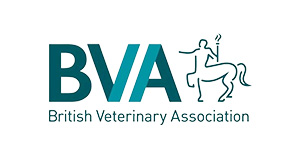Adder Bites: Lady’s Encounter
With the sun shining, warmer weather is a great excuse to get out and about more with our dogs. However, one thing to be aware of is the risk of adder bites, which although rare, they can be serious.
The European adder, Vipera berus berus, is the only venomous snake in the UK. It’s a protected species and can vary in colour from pale grey to dark brown to reddish brown. The head has a distinct ‘V’ or ‘X’ shaped mark on the top. The adder has a characteristic vertically slit pupil that is helpful in distinguishing it from other British snakes and lizards. Adders generally only bite when provoked or startled. Adder bites usually occur from February to October as they come out of hibernation as the breeding season starts, with the peak time for bites between June and August. They are found in habitats such as heathland, sand dunes, moorland and woodland edges. They are hard to spot, so it can be hard to prevent a bite from occurring. If you are concerned, the safest option is to keep your dog on the lead.
We recently had a visit from Lady, an inquisitive 7 year-old cocker spaniel, who was bitten on the nose by an adder whilst out on a walk in Stockhill woods, near Priddy. Thankfully, Lady’s owner saw the snake bite her and acted quickly and calmly, getting her to the car and bring her in to us immediately.
If an adder bite occurs, it is important to try and stay calm and bring transport to your dog, if this is not possible, carry them to the car to keep their heartrate down. This can help reduce the speed in which the venom spreads. DO NOT try to use a tourniquet or ligature (tie) as this can damage the tissue and lead to complications.
On arrival Lady was presenting clinical signs of anaphylactic shock, she had localised swelling to her nose, face and mouth, which continued to spread to her tongue and throat.
An adder bite that has injected enough venom causes significant levels of morbidity (symptoms) but has a relatively low risk of mortality (death). However, as it is unpredictable, a vet check and treatment are always needed. Bites are very painful and can cause significant swelling. Clinical signs can also include lethargy, collapse, vomiting, panting, lameness, bruising and bleeding. Dogs can also show signs of shock such as a high heart rate and blood pressure changes. Bites to the tongue or neck can be life threatening if significant swelling develops. The wounds themselves can have damaged skin which can slough off.
Shepton Vets is a Tox Box registered practice, meaning we keep anti-venom (and other anti-toxin drugs) on site. Antibiotics may also be required. If the skin becomes damaged and starts to die after a few days, this may require surgery to remove it.
Lady was treated with an anti-venom and anti-inflammatories as well as pain relief and intravenous fluids. She responded well to treatment and was monitored here by our out of hours team, overnight. Lady was able to go home the next day with supportive treatments, monitoring for signs of progressive swelling, dyspnoea, anorexia, skin damage, sloughing and necrosis. Lady is doing well and has made a full recovery, back to her normal self.
Anti-venom is a human based medicine and has to be imported into the UK. In animals at risk of swelling that can compromise breathing it can rapidly reduce swelling by binding to the venom and dramatically reduces hospitalisation time. If you are concerned your dog has been bitten, do not hesitate to contact us.













